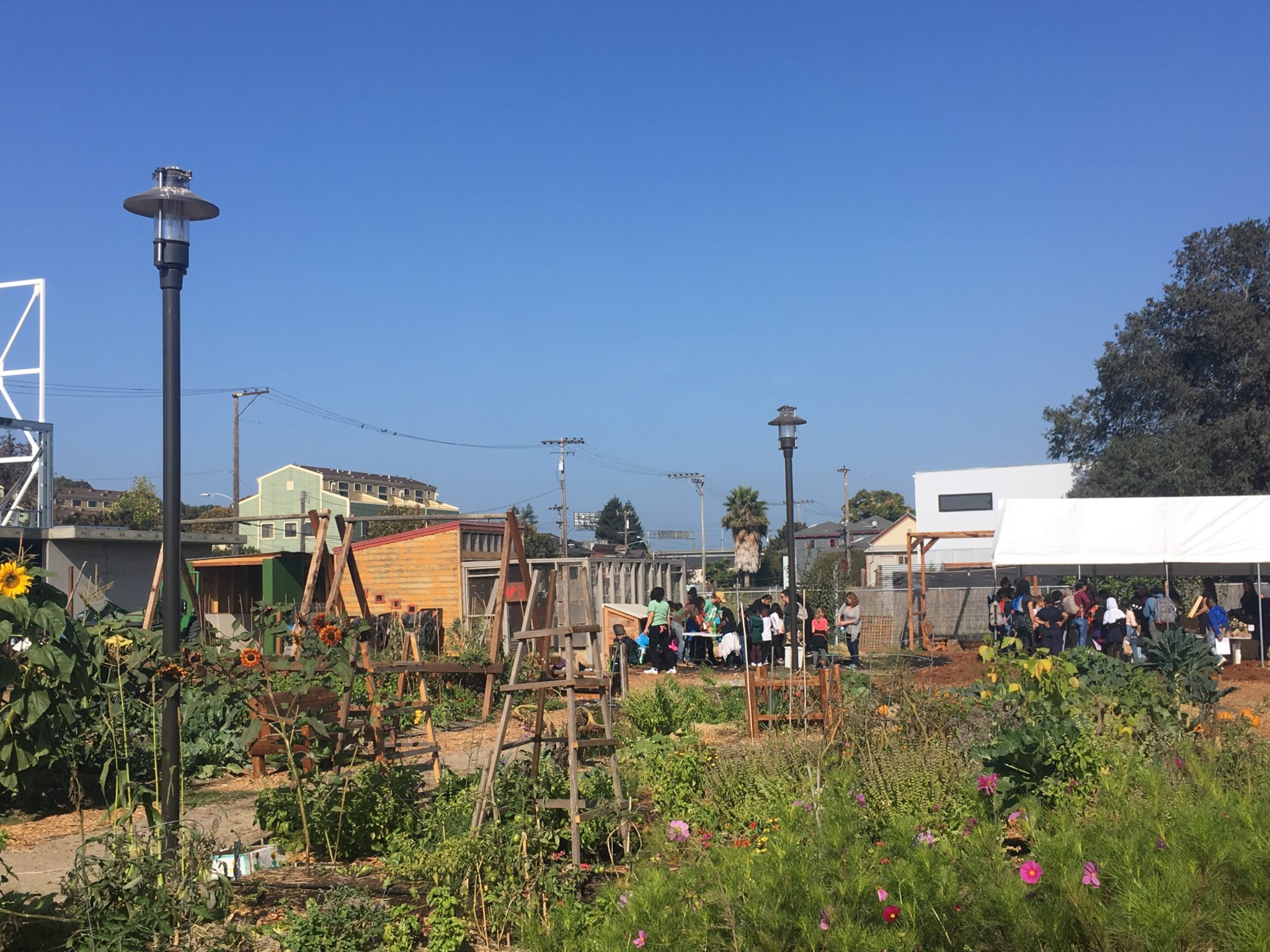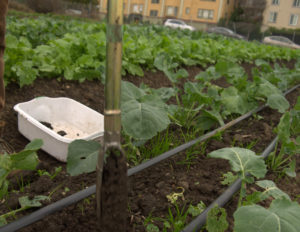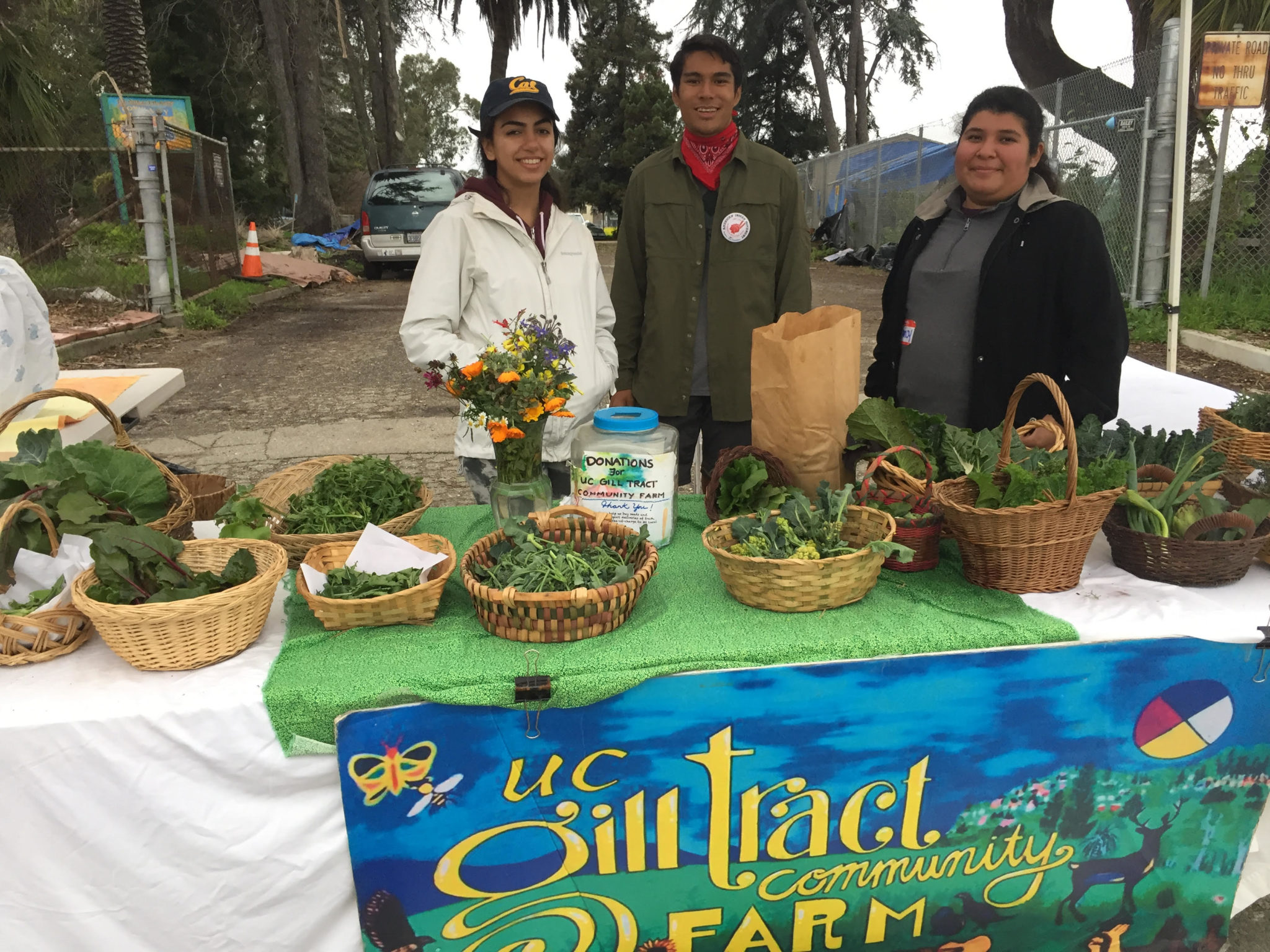
November 13, 2018
By Jennifer Sowerwine and Charisma Acey
(From left to right) Jennifer Sowerwine is Assistant Cooperative Extension Specialist in the Department of Environmental Science, Policy, and Management. Charisma Acey is Assistant Professor of City and Regional Planning.
On a recent sunny afternoon in West Oakland, 300 elementary school students gathered at City Slickers Farm Park and held worms, learned about pollinators, and took home lettuce plants they potted up with UC Master Gardeners. In nearby Albany, hundreds of people attended the 4th annual Harvest Festival at the UC Gill Tract Community Farm to celebrate community and the Farm’s success growing and distributing over 15,000 pounds of fresh produce that year to low income communities. In both of these contexts, the multiple goals and benefits of urban agriculture were on display, affirming the fact that urban agriculture is producing a lot more than food alone.

City Slickers “Ag Day” brings local elementary school students to explore the Farm Park on October 25, 2018. Photo by: Alana Siegner
Scholars, practitioners, government agencies, and foundations have been documenting the vast array of social, environmental, health, and economic benefits of urban farming and gardening in the United States. They have also identified significant challenges including insecure land tenure and capital; lack of living wage jobs; production challenges associated with soil toxicity, pests and low productivity; and socio-economic and equity threats such gentrification, that undermine the very social justice missions of many urban farms (Golden 2013; Santo et al 2016; Horst et al 2017; Siegner et al 2018). Urban agriculture is not a “silver bullet” solution to end hunger, however it is often an important component of community food security and food sovereignty, for the simple reason that “growing your own food is a transformative act” (Helmer 2016).
California has 4.9 million food insecure residents (12.5% of the population) (CAFB 2018) and residents in the East Bay in particular are experiencing extremely high rates of food insecurity; over 120,000 people in Alameda County rely on CalFresh benefits (food stamps) and 1 in 5 residents depend on food bank assistance to feed themselves and their families (ACCFB 2014). Urban agriculture is emerging as one among many solutions to address high rates of community food insecurity in the Bay Area and across the country. Yet many of these farms and gardens struggle to make their farms economically viable, and seek information on effective practices for managing soils, water, and pests especially in the face of climate change or contaminated/poor soils.
The Berkeley Food Institute launched a 3-year collaborative research, education, and extension urban agriculture project, Sustainable Urban Farming for Resilience and Food Security, to better understand and address questions of urban agriculture viability, sustainability, and equity within the East Bay community and beyond. Faculty, students, community members, and educators spanning the fields of food systems, agroecology, soil science, entomology, and city and regional planning are 1) evaluating food access and food distribution methods to assess their effectiveness in meeting food needs of urban food insecure communities and reducing food waste, 2) conducting research on soil health and soil contamination to determine strategies for improving the quality, safety, water retention capacity, and productivity of urban soils, and 3) evaluating how urban landscape composition harms or promotes beneficial insects and their habitats, which play a critical role in urban pest control due to limited use of chemical control.

Soil health research at the Oxford Tract. Photo by Tim Bowles.
Since the project launched in 2018, the soil health team has established a biointensive, no-till farming site at the Oxford Tract, modeling diversified annual vegetable production with high compost inputs on a small urban scale. Managed in partnership with the Multinational Exchange for Sustainable Agriculture (MESA), the method is adopted from local sustainable agriculture leader Singing Frogs Farm. Over 2,700 pounds of produce grown from the site has been donated to the UC Berkeley and community food pantries. The beneficial insects and pollinators team hosted a series of workshops on integrated pest management (IPM) in urban settings, and is partnering with urban farms to establish insect sampling and intervention experiments. The results of both groups will be shared back with the urban farming community through educational videos, fact sheets, and site visits.

UC Gill Tract Community Farm Stand. Photo by Emanuelle Klachky.
In addition to publishing a literature review of urban agriculture and food security, the food access, distribution, and waste team partnered with community stakeholders to design and implement a survey of 140 East Bay farms and gardens to better understand the mission, organization, successes, and challenges urban farmers face in achieving their goals. Among these goals are addressing food insecurity with an explicit focus on access to and distribution of urban produced food. We’ve identified a range of typologies that characterize East Bay urban agroecology (for profit, non-profit, educational farms, community and school gardens, etc.) and are increasingly interested in the role of informal non-monetary food distribution networks as a mode of food access. Farms and gardens are sharing via volunteers, crop swaps, online platforms, apps, and gleaning groups, among others. Based off of our preliminary findings, it is intriguing to consider that the “urban farmer of tomorrow” might focus less on production farming and more on “growing people growing food”—that is, traveling around the city assisting an array of homes, schools, and institutions to establish their own growing gardens.
East Bay urban agriculture is part of a national movement, building healthy, climate-resilient communities from the ground up. Our ultimate goal is to help urban farmers scale effective farming practices, identify effective strategies to increase healthy food access, and secure the long-term viability of urban farming now and into the future.
For more information or how you can engage in the project, please contact Jennifer Sowerwine or Charisma Acey and sign up for our project newsletter by emailing growingroots@berkeley.edu.
Citations:
- California Association of food Banks. http://www.cafoodbanks.org/hunger-factsheet
- Alameda County Community Food Bank (ACCFB). Hunger: Alameda County Uncovered, 2014.
- Golden, S. Urban Agriculture Impacts: Social, Health, and Economic: A Literature Review; UC Sustainable Agriculture Research and Education Program, 2013.
- Helmer, J. Urban Farms Bring Us Together, But Can They Feed Enough of Us? Civil Eats. May 9, 2016. https://civileats.com/2016/05/09/can-urban-farms-be-more-than-community-hubs/
- Horst, M.; McClintock, N.; Hoey, L. The Intersection of Planning, Urban Agriculture, and Food Justice: A Review of the Literature. Journal of the American Planning Association 2017, 83 (3), 277–295.
- Santo, R.; Palmer, A.; Kim, B. Vacant Lots to Vibrant Plots: A Review of the Benefits and Limitations of Urban Agriculture; Johns Hopkins Center for a Livable Future: Baltimore, MD, 2016.
- Siegner, A.; Sowerwine, J.; Acey, C. Does Urban Agriculture Improve Food Security? Examining the Nexus of Food Access and Distribution of Urban Produced Foods in the United States: A Systematic Review. Sustainability 2018, 10(9), 2988; https://doi.org/10.3390/su10092988